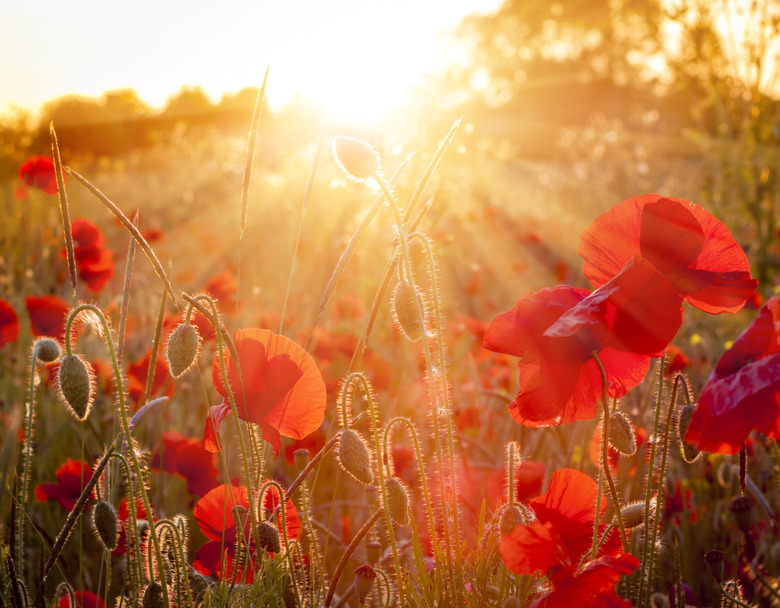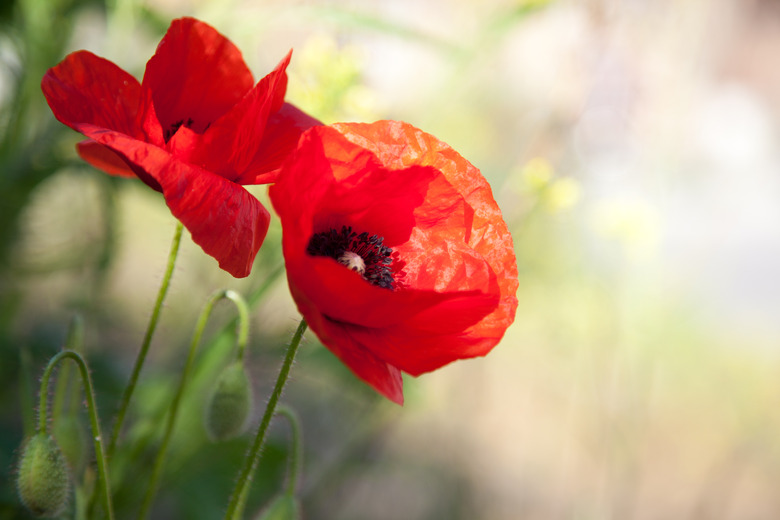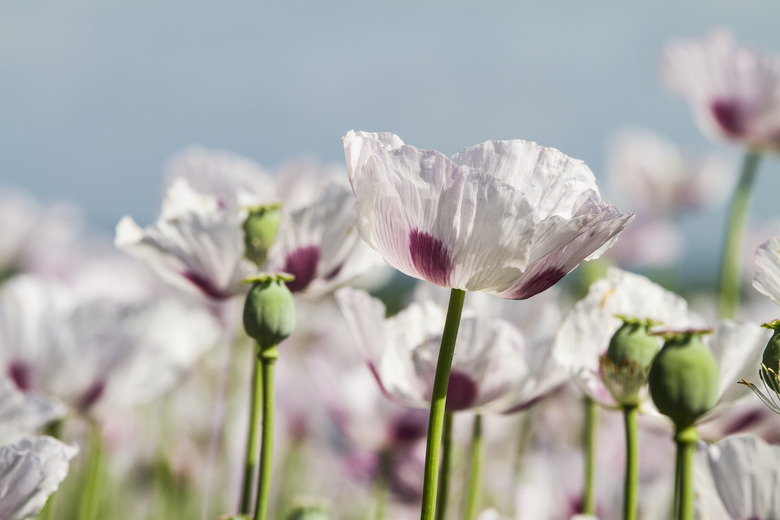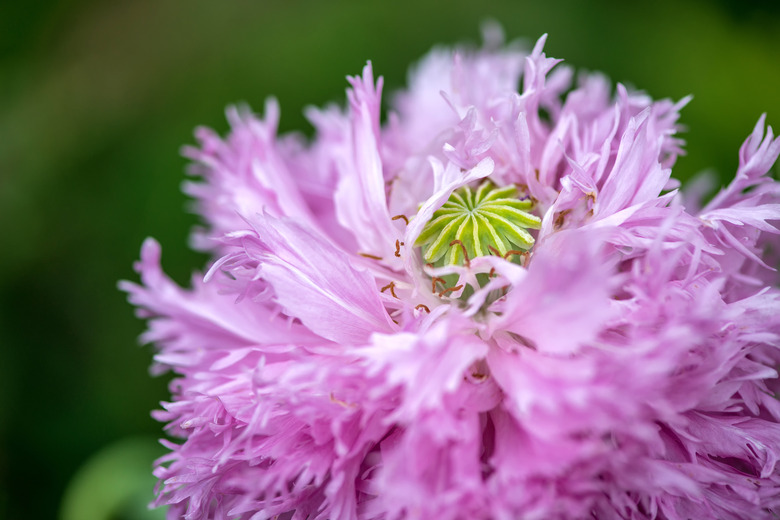The Difference Between Oriental Poppies & Opium Poppies
Poppies are spectacular ornamentals with vibrant, showy blossoms beloved by gardeners. Two particularly attractive species are oriental poppies (Papaver orientale) and opium poppies (Papaver somniferum). They look similar, with crepe-papery petals and tall, strong stems. But the differences are apparent once you begin learning about them. For starters, opium poppies are illegal to grow in the U.S. unless you have a permit declaring that you are not cultivating them for production of narcotics.
Oriental Poppies
Oriental poppies are perennial plants that produce huge, crepe-petaled blooms in vivid pinks, reds, oranges or whites. Flowers appear in May or June on stems up to 4 feet tall. The flowers only last a week or two, but their beauty is dramatic and even magical, contrasting beautifully against the finely cut, downy foliage. The plants go dormant in midsummer or late summer. They grow best in areas with cold winters, as in U.S. Department of Agriculture plant hardiness zones 2 through 7.
Opium Poppies
Opium poppies look quite similar to oriental poppies, with their large flowers with crinkly petals borne on tall stems. Flower forms range from simple four-petaled to those with deeply fringed petals. They can be blue, white, pink, mauve, lavender, raspberry, maroon, red-orange or bicolored, and often have a contrasting dark spot at the base of the petals.
Opium poppies are annuals, completing their entire life cycle within one calendar year, not perennials. That doesn't mean they need replanting every year though. These annuals resow themselves and naturalize as wildflowers. Opium poppies thrive in USDA zones 6 and 7, and they drop petals quite quickly after blooming.
- Opium poppies look quite similar to oriental poppies, with their large flowers with crinkly petals borne on tall stems.
Differences and Similarities
If you want to learn to tell oriental and opium poppies apart, you'll need to look closely to notice the differences. Oriental poppy leaves are bright green and finely cut. They do not clasp the poppy stem. Opium poppy leaves have a gray or blue hue mixed in with the green. The broad leaf bases do clasp the poppy stem. Flowering times are also slightly different, with opium poppies opening in spring while oriental poppies bloom in in early summer.
The uses of the two plants are also very different. Gardeners grow oriental poppies for their glorious beauty, period. They look fabulous in the garden, ask little more than sunshine and well-drained soil, and make lovely indoor cut flowers. Although it is illegal to grow opium poppies in this country to make narcotic drugs like heroin, they are grown in other countries for this purpose. Opium poppies are also responsible for producing the poppy seeds that work so well on muffins and bagels, while oriental poppies are not edible. In fact, most parts of the plants are poisonous, which is why they are not browsed by deer.



